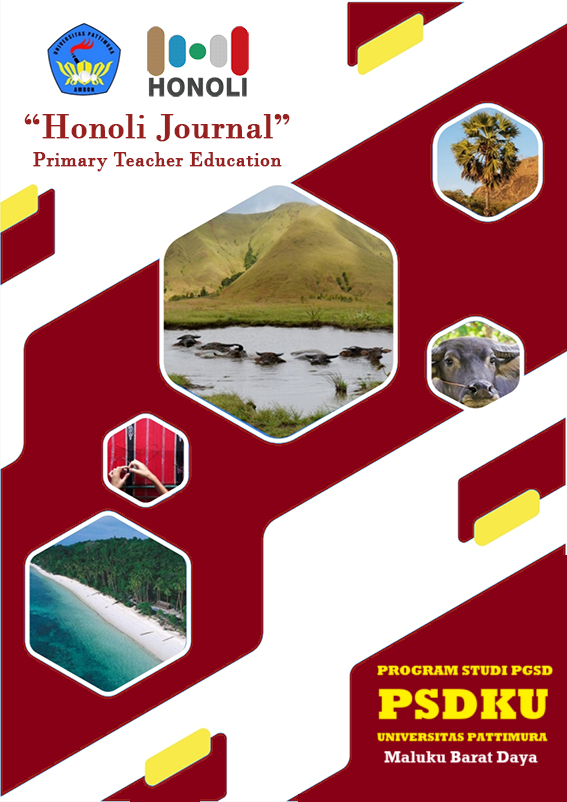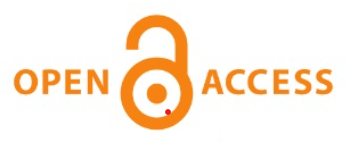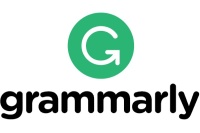An Effort to Improve Student Learning Outcomes in Civics through the Application of the ALTRRQ in Fifth Grade Students of Negeri Wakarleli Elementary School
Abstract
This study aims to describe the improvement of Civics (PKn) learning outcomes through the implementation of the Active Learning model of the Role Reversal Question (ALTRRQ) type in fifth-grade students at Negeri Wakarleli Elementary School. The data collection methods used in this study included tests, observations, and documentation. The research instruments consisted of test items and observation sheets. The data analysis techniques employed were descriptive quantitative and qualitative analysis. This study was a classroom action research (CAR), consisting of four stages: planning, implementation, observation, and reflection. The subjects of the study were nine fifth-grade students at Negeri Wakarleli Elementary School. The research instruments included teacher activity sheets, student activity sheets, and test questions. The collected data were analyzed using percentage formulas. The results showed that the percentage of teacher activity increased from 72.61% in Cycle I to 97.82% in Cycle II. Student activity also improved, rising from 66.66% in Cycle I to 95.65% in Cycle II. Student learning outcomes increased from 68.97% in Cycle I to 87.17% in Cycle II. Therefore, it can be concluded that the application of the Active Learning model of the Role Reversal Question (ALTRRQ) type in Civics instruction can improve the learning outcomes of fifth-grade students at Negeri Wakarleli Elementary School.
Downloads
References
Afifa, R. S. Q., Rahmatillah, K., & Al-Faruqi, M. U. (2022). Implementasi Penilaian Hasil Belajar Siswa Kelas VI SDN Wonorejo II. Jurnal Sosial Humaniora Sigli, 5(2), 111–116. http://journal.unigha.ac.id/index.php/JSH
Agusti, N. M., & Aslam, A. (2022). Efektivitas Media Pembelajaran Aplikasi Wordwall Terhadap Hasil Belajar IPA Siswa Sekolah Dasar. Jurnal Basicedu, 6(4), 5794–5800. https://doi.org/10.31004/basicedu.v6i4.3053
Astuti, S., Rukmana, D., Pramudiani, P., & Zulherman. (2022). The Role Of Teachers and Parents to Improve Children ’ s Motivational Learning in Pandemic Situation. International Journal of Evaluation and Research in Education (IJERE), 11(3), 1162–1170. https://doi.org/10.11591/ijere.v11i3.22583
Candrawati, E. (2020). Penerapan Model Direct Intruction Untuk Meningkatkan Hasil Belajar Biologi. Jurnal Educatio FKIP UNMA, 6(1), 140–146. https://doi.org/https://doi.org/10.31949/educatio.v6i1.287
Chauhan, S. (1979). Innovation in Teaching and Learning Process. Vikas Publishing House PVT. LTD.
Darmayanti, S. E., & Wibowo, U. B. (2014). Evaluasi Program Pendidikan Karakter Di Sekolah Dasar Kabupaten Kulon Progo. Jurnal Prima Edukasia, 2(2), 223. https://doi.org/10.21831/jpe.v2i2.2721
Marpiah. (2022). Penerapan Metode Brainstorming Untuk Meningkatkan Hasil Belajar Siswa Smk Pada Pembelajaran Keimanan Pada Taqdir Allah. STRATEGY : Jurnal Inovasi Strategi Dan Model Pembelajaran, 2(2), 212–219. https://doi.org/10.51878/strategi.v2i2.1174
Rohana, & Arif, M. (2018). Meningkatkan Hasil Belajar Melalui Model Pembelajaran Active Learning Tipe Role Reversal Question di Kelas VII2 SMPN 1 Gunung Tuleh. Jurnal Kepemimpinan Dan Pengurusan Sekolah, 3(1), 65–80. https://doi.org/10.32585/jdb.v2i1.179
Sudarto, Jauhar, S., & Mardani, F. (2025). Pengaruh Penggunaan Model Active Learning Tipe Role Reversal Question Terhadap Hasil Belajar IPAS Siswa Kelas IV SD Negeri 141 Lilina Ajangale. JCI Jural Cakrawala Ilmiah, 4(7), 1009–1014.
Susiani, K., Suastra, I. W., & Arnyana, I. B. P. (2022). Study of improving the quality of learning in an effort to improve the quality of elementary school education. Jurnal EDUCATIO (Jurnal Pendidikan Indonesia), 8(1), 37–44.






